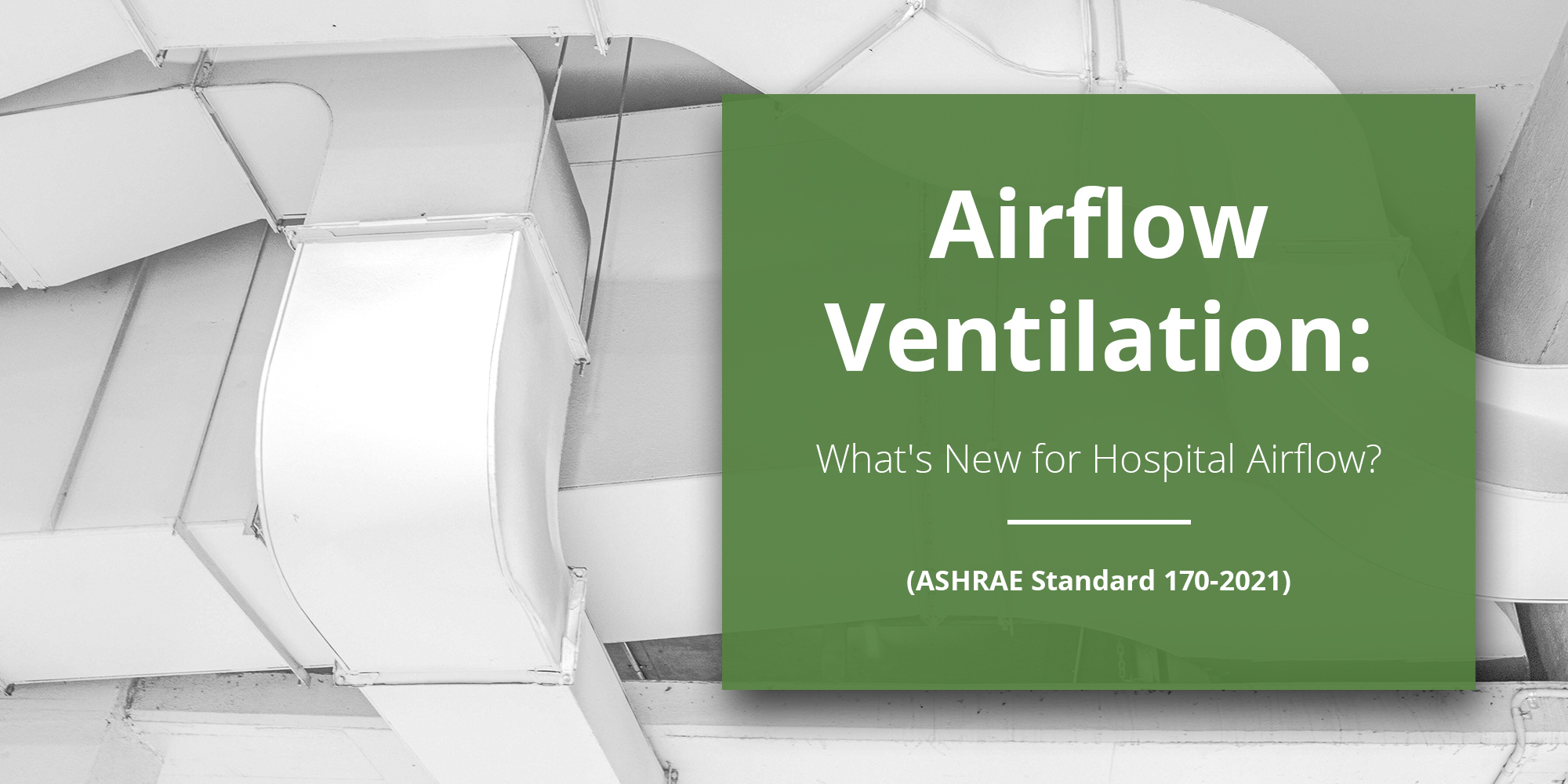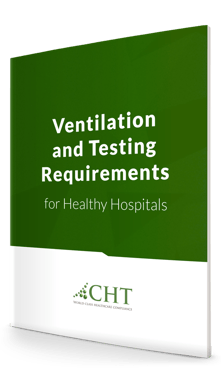
The ASHRAE Standard 170 has guided ventilation requirements for healthcare facilities and the industry for over a decade.
I think you'll agree that the core elements of Standard 170 for infection control have risen to the occasion and weathered the coronavirus storm.
In healthcare facilities, ventilation goes way beyond comfort. Air handling and distribution systems will help control the transmission of airborne infections and have the ability to reduce hospital infections overall.
Bottom line:
A ventilation system proves effective at reducing hospital infections.
HVAC systems are built to keep indoor air quality (IAQ) safe for patients. Because of the airflow standards, equipment must meet high ventilation rates and filtration requirements. Healthcare facilities serve a critical service, and they must consider several factors to provide adequate public health. Among the concerns for healthcare facilities is airflow ventilation.
CHT provides pressure and airflow tests with documentation as part of your Vitaleyez™ program profile that satisfies the code. As healthcare facility managers, you have to leverage real-time data to make informed decisions. This article discusses the importance of air quality and hospital airflow and the changes to ASHRAE Standard 170-2021.

[Bonus Content] Download Our Free PDF Ventilation and Testing Requirements
We put together a guide to help you manage the risk associated with utility systems. You'll learn about ventilation testing and room pressurization, notable Element of Performance findings for EC.02.05.01 from The Joint Commission, and more!
(No email or signup required):
The Importance of Air Quality in Healthcare Facilities
The Importance of Air Quality in Healthcare Facilities
Humidified air improves air quality in the healthcare industry.
Correct humidity is essential to patient health, staff comfort, and the prevention of electrostatic damage to medical equipment.
Nortec, a leading manufacturer of commercial/industrial humidification systems, says...
"A comfortable, healthy atmosphere is necessary for rest and recovery. If a healthcare environment is too dry it will hinder a patient’s recovery and encourage infection and other illnesses. Deviations from the mid-range of relative humidity (RH) of 40-60% can reduce air quality by causing increased growth of bacteria, airborne infection, sore eyes, sore throat, increased static and dust, and premature coagulation." [source]
Research has linked air between 40 and 60 percent relative humidity (RH) with less-effective aerosol travel, shorter airborne and surface survival times, lower transmission rates, and more effective patient lung repair functions.
In healthcare facilities, humidifiers prevent the spread of bacteria and viruses. The standard's (ANSI/ASHRAE/ASHE 170) ventilation system addresses temperature and humidity that could be compromised without the proper attention and care.
Hospital Airflow Plays a Crucial Role in Infection Control
During the stressful times of the pandemic, Kaweah Delta Medical Center recently completed an airflow project with a new ventilation system that could isolate up to 86 COVID-19 patients at a time, stated Shawn Elkin, Kaweah Delta’s Infection Prevention Manager.
The project adjusted airflow in areas of the hospital used as COVID-19 units and met Occupational Safety and Health Administration and National Institute for Occupational Safety and Health Standards.
“What we’re doing is protecting the people who are outside of the room. We draw the air from the hallway into the patient room, filter it and exhaust it outdoors,” Elkin said.
You can read the full story on the airflow project here: Hospital Completes Airflow Project.
There are precautions you can take to manage indoor air to decrease the transmission of infections.
In the next section, we address the top ten changes so far in Standard 170-2021.
Changes to ASHRAE Standard 170-2021
Inadequate ventilation can be disastrous in healthcare facilities. For that reason and more, Standard 170 is updated every four years. The goal is to define HVAC system guidelines to improve comfort and minimize the risk of contamination and nosocomial infections.
ANSI/ASHRAE/ASHE 170-2021 coincides with Standard 170-2017: Ventilation of Healthcare Facilities. Both standards...
"Consider the chemical, physical, and biological contaminants that can affect the convalescence of patients and the delivery of their needed medical care, as well as the safety of patients, health care workers, and visitors. It is for use with new buildings and additions to existing buildings. Its requirements apply to patient care areas, resident care areas, and related support areas within health care facilities." [source]
According to ANSI, the newer edition went through some of the following changes:
1. Improved guidance on thermal comfort conditions.
2. Extensive modifications to address the Outpatient and Residential sections.
3. Addition of a new outpatient ventilation table to address nonacute-type spaces.
4. Addition of new columns in the ventilation tables to prescribe filtration requirements and designate unoccupied turndown.
5. Expanded guidance on separation distance requirements for varied intake and exhaust arrangements.
6. Expanded requirements to allow airborne infectious isolation room exhaust discharge to general exhaust under certain conditions.
7. Improved guidance on space ventilation requirements needed for anesthetic gas use.
8. Clarification of Class 1/Class 2/Class 3 imaging in coordination with FGI.
9. Revised definition of “invasive procedure.”
10. Improved guidance related to behavioral and mental health.
Resources:
ANSI - Ventilation of Healthcare Facilities
Healthcare Facilities Today - Hospital Airflow Crucial for Infection Prevention
Conclusion
COVID-19 has opened our eyes to how a building can protect (or expose) us from disease(s). Of course, indoor air management has always been critical, but we are now more aware of the importance of managing the healthcare facility to prevent more extensive health problems.
CHT can provide pressure and airflow tests with documentation as part of your Vitaleyez™ program profile that satisfies the code. In addition, CHT technicians and verifiers speak TJC, CMS, NFPA99, ASSE, OSHA, FGI, and several other languages to help everyone breathe easier.
They can assist in making sure your rooms are appropriately pressurized. Finally, consult with your CHT representative to have the confidence to pass your next survey with all the proper documentation.




